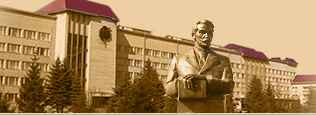SENTIMENTAL TOURISM AS THE SOCIAL HAPPENING AND THE MOST PERSPECTIVE KINDS OF TOURISM WITHIN UKRAINIAN-POLISH BORDERLAND
The article explains what “sentimental tourism” is and its detailed analysis. The question touched upon deportation of Ukrainian people and the straight connection with this type of tourism wich can influence on its motivation. Statistics and facts of deportation are included. Therefore, the relation between Ukraine and Poland is the most vital element in such case, within particular investigation to rearrange touristic potential within Ukrainian-Polish borderland. In order to reach the aim of this investigation some task has been given: 1. to analyze literary sources of various authors and scientists who studied the same subjects; 2. to study different articles of polish scientists who have been working within current or similar investigation; 3. to give my own classification of concept of “sentimental tourism”; 4. to draw a diagram, a map and a table based on the selected research. Sentimental tourism is that kind of tourism that continues to evolve. It includes historical, political, national and other aspects not only of tourism but social life also. Sentimental tourism is one of the types of tourism that continues to evolve. It includes historical, political, national and other aspects of not only tourism, but also social life. Having raised the history of relations between Ukraine and Poland, it becomes clear that it is not too rosy and objective. Negative and controversial moments were more than enough. However, in the period of the development of civilization and the changing paths of development of the states (Ukraine and Poland), the dialogue between the two sides became more constructive, because without a well-organized relationship between the high officials of the two states, harmonious and productive development of tourism on both sides is impossible.
Key words: sentimental tourism, deportation, Poland, borderland
References:
- Kokotaylo O. Ukrainians’ world congress of Kholmshchyna and Pidlyashshya – materials of scientific conference / O. Kokotaylo. – Lviv : social and cultural society «Kholmshchyna». – 1996. P. 148–151.
- Makar Y. From deportation to deportation. Social and politic life of ukrainians from Kholmshchyna and Pidlyashshya (1915-1947). Investigation. Memories. Documents. Vol. 1. Investigation / Y. Makar, M. Hornyy, V. Makar, A. Salyuk. – Chernivtsi : Bukrek, 2011. – P. 621–655.
- Samborsʹka O. Boyky. O. Samborsʹka [Web-resource]: http: // www.bojky.wordpress.com.
- Soroka Y. Deportation of ukrainians from their ethnic lands and polishes from URSR (1944-1946) / Y. Soroka // Ethnic history of Europeans. – Kyiv, 2001. – Vol. 9. – P. 95–99.
- Shandor F. F. Modern classification of tourism / F. F. Shandor, M. P. Klyap. — Kyiv: “Knowledge”, 2011. — 334 P.
- Babinski G. Refleksje nad kierunkami przemian pograniczu polsko-ukraiskiego / Grzegorz Babinski // Na pograniczu «nowej Europy». Polsko-ukraińskie sąsiedztwo. Seria: Studia Ethnologica / [redakcja Magdalena Zowczak]. – Warszawa : Wydawnictwo DiG, 2010. – 744 P.
- Rogowska A., Stepien S. Granica polsko-ukrainska w ostatnim polwieczu / Anna Rogowska, Stanislaw Stepien – [Web-resource]: http://www.ji.lviv.ua/n20texts/pol/rog-st-pol.htm.
- Zinʺko Y. Implementation of elements of sustainable tourism in the Ukrainian Carpathians / Y. Zinʺko, M. Malska, M. Malskiy, N. Amtoniuk // Conditions of the Foreign Tourism Development in Central and Eastern Europe – Tourism in Geographical Environment (Volume 10) – Wroclaw : Institute of Geography and Regional Development, 2008. – P. 232–247.
